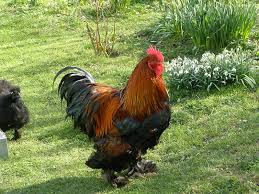strange creatures
 The Cochin chicken
The Cochin chicken
The Cochin is a breed of large domestic chicken. It derives from large feather-legged chickens brought from China to Europe and North America in the 1840s and 1850s. It is reared principally for exhibition. It was formerly known as Cochin-China.
Colors: Red, Blue, Black, White
Origin: China
Egg color: Brown
Egg production (annual): 100
APA: Asiatic
Other names: Shanghai; Cochin-China
Use: ornamental
 Greater Prairie-Chicken
Greater Prairie-Chicken
The greater prairie-chicken or pinnated grouse (Tympanuchus cupido), sometimes called a boomer, is a large bird in the grouse family. This North American species was once abundant, but has become extremely rare and extirpated over much of its range due to habitat loss. Conservation measures are underway to ensure the sustainability of existing small populations. One of the most famous aspects of these creatures is the mating ritual called booming.
Adults of both sexes are medium to large chicken-like birds, stocky with round wings. They have short tails which are typically rounded. Adult males have orange comb-like feathers over their eyes and dark, elongated head feathers that can be raised or lain along neck. They also possess a circular, un-feathered neck patch which can be inflated while displaying; this, like their comb feathers, is also orange. As with many other bird species, the adult females have shorter head feathers and also lack the male's yellow comb and orange neck patch. Adults are about 43 cm long, and weigh between 700–1,200 g. The greater prairie-chicken has a wingspan range of 69.5–72.5 cm.
The greater prairie-chicken prefers undisturbed prairie and was originally found in tallgrass prairies. It can tolerate agricultural land mixed with prairie, but sparser population density is found in areas that are more agricultural. Its diet consists primarily of seeds and fruit, but during the summer it also eats green plants and insects such as grasshoppers, crickets, and beetle. This species was once widespread all across the oak savanna and tall grass prairie ecosystem.
Source: Wikipedia


















